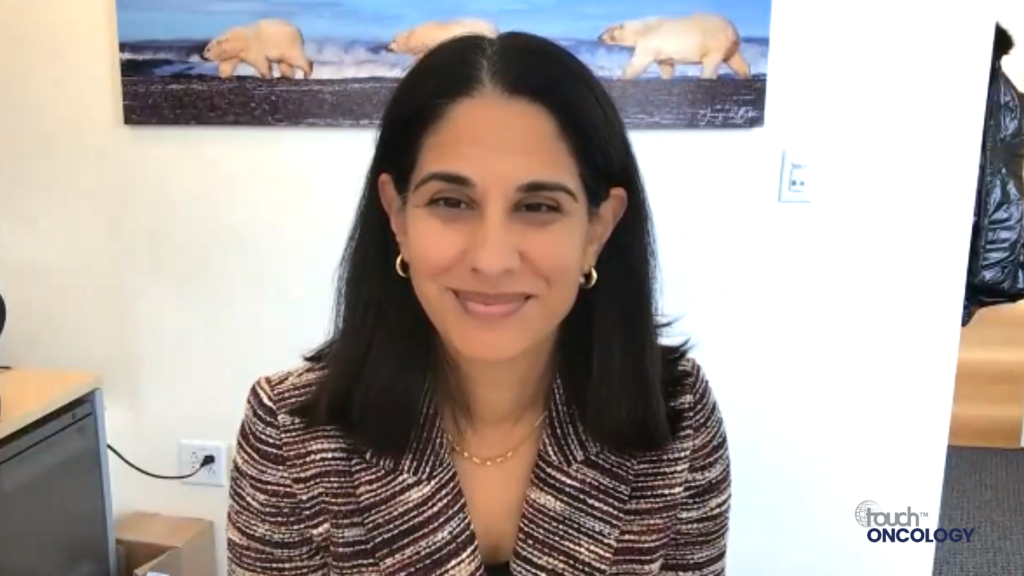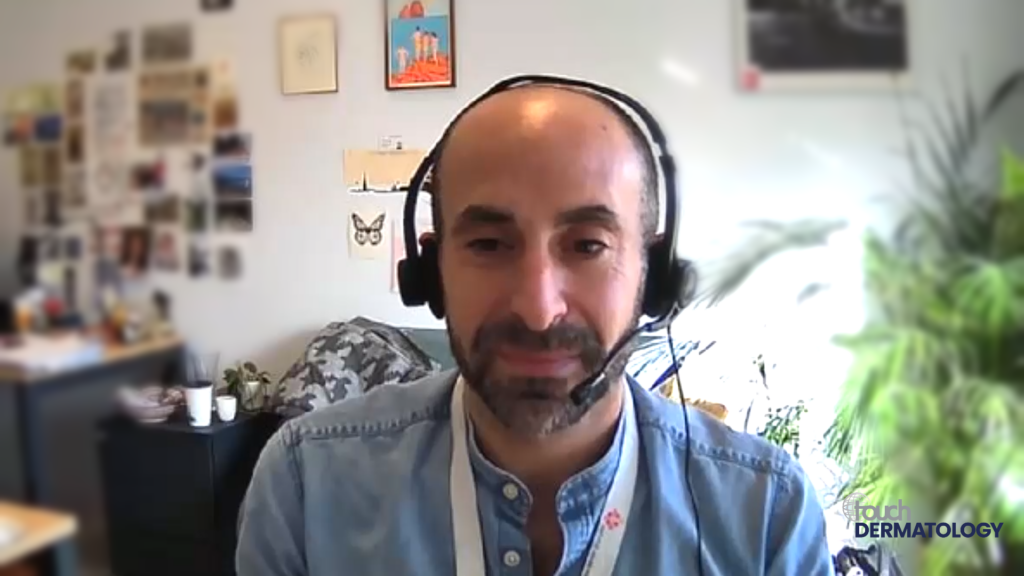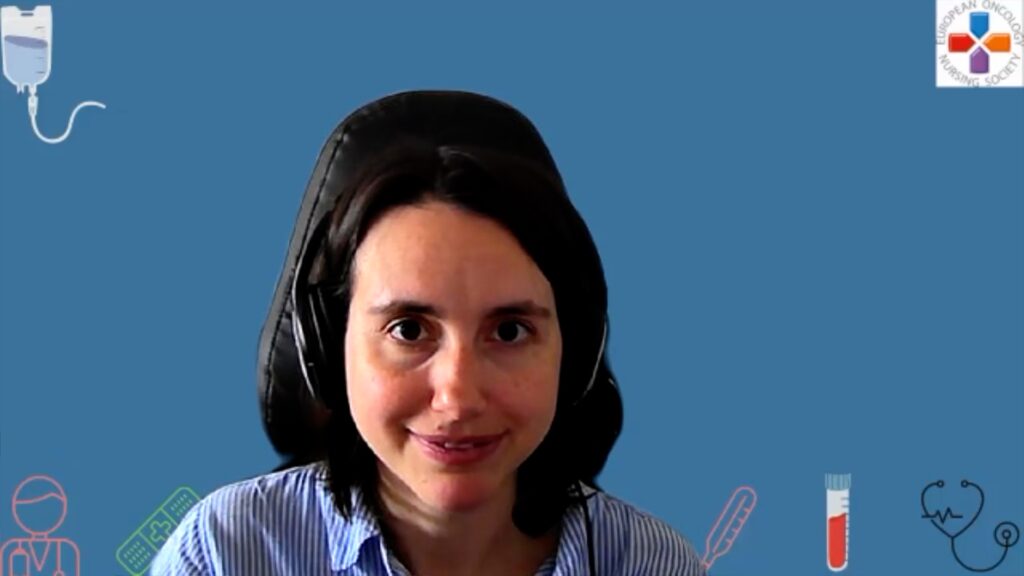touchONCOLOGY coverage from ESMO 2024:
The DESTINY-Breast06 (DB-06) trial explored the effectiveness of trastuzumab deruxtecan (T-DXd) in patients with hormone receptor-positive (HR+), HER2-low or HER2-ultralow metastatic breast cancer (mBC). Patients were screened for HER2 status and randomized to receive either T-DXd or treatment of the physician’s choice (TPC). Results showed that T-DXd significantly improved progression-free survival (PFS) compared to TPC, across various HER2 classifications. The study also highlighted discrepancies between local and central HER2 test results, with many locally classified HER2 IHC 0 patients being reclassified as HER2-low or ultralow by central testing. Reassessment of HER2 status is recommended for treatment eligibility.
Prof. Giuseppe Viale discusses the significance of HER2-ultralow expression in metastatic breast cancer and the place of tratuzumab deruxtecan for the treatment of this patient population. The late-breaking abstract ‘Human epidermal growth factor receptor 2 (HER2)-low and HER2-ultralow status determination in tumors of patients (pts) with hormone receptor–positive (HR+) metastatic breast cancer (mBC) in DESTINY-Breast06 (DB-06)’ (LBA21) was presented at the European Society of Medical Oncology Congress 2024 on 13–17 September 2024 in Barcelona, Spain.
Questions:
- Can you explain the significance of the HER2-low and HER2-ultralow classifications in metastatic breast cancer (mBC) treatment, especially concerning trastuzumab deruxtecan (T-DXd)?
- How did T-DXd perform in improving progression-free survival (PFS) for HER2-low and HER2-ultralow patients?
- Do you think it would be beneficial for patients with HER2 IHC 0 scores to be reassessed for T-DXd eligibility, based on the trial’s findings?
- How could increased awareness of HER2-ultralow expression levels influence treatment strategies for metastatic breast cancer in the future?
Disclosures: Prof. Giuseppe Viale discloses that he has acted as a consultant for Agilent, AstraZeneca and Daiichi Sankyo; has received grant/research support from Roche/Genentech, Ventana Medical Systems and Dako/Agilent; and has served on an advisory board for Roche, Pfizer, Gilead, AstraZeneca and Daiichi Sankyo; has received honoraria from: Astrazeneca, Roche and Daiichi Sankyo.
This content has been developed independently by Touch Medical Media for touchONCOLOGY. It is not affiliated with the European Society of Medical Oncology (ESMO). Views expressed are the speaker’s own and do not necessarily reflect the views of Touch Medical Media.
Transcript:
I am Giuseppe Viale. I’m Professor of Pathology and Chairman of the Department of Pathology and Laboratory Medicine at the European Institute of Oncology in Milan, Italy. It’s a pleasure to be with you today.
1: Can you explain the significance of the HER2-low and HER2-ultralow classifications in metastatic breast cancer (mBC) treatment, especially concerning trastuzumab deruxtecan (T-DXd)?
As you know, we have spent maybe twenty, twenty-five years trying to define a binary classification of HER2 status in breast cancer, either HER2 positive or HER2 negative. But soon, we realized that the expression of HER2 in breast cancer is a continuum, and we have just set some thresholds and used them to score these tumors according to the intensity and completeness of cell membrane staining in the tumor cells. So we had those cases that were scored 3+ and considered HER2 positive, those cases scored 2+, and then, according to the results of in situ hybridization, whether they were amplified or not, they were either positive or negative. And then those that we have always called negative, which are those with a score of 1+ or 0.
What has happened in recent years is that, despite the fact that in the past, there was no evidence of any benefit of traditional HER2 therapies like trastuzumab, pertuzumab, or T-DM1 for these tumors, the second-generation antibody-drug conjugates, and in particular trastuzumab deruxtecan (TDXd), have proven to be effective for the treatment of patients with metastatic hormone receptor-positive breast cancer with a low or ultra-low expression of HER2.
The definition of these tumors is that HER2-low tumors have been scored 1+ or 2+ by immunohistochemistry but are not amplified, and the ultra-low definition is breast cancer with some expression of HER2 in ten percent or less of the tumor cells. This drug, TDXd, has proven to be effective in both the HER2-low and ultra-low populations of patients enrolled in a clinical trial named DESTINY-Breast06, with a hazard ratio of 0.62–0.64, which means almost a 40% reduction in the risk of disease progression. Translated into months, we know that compared to traditional chemotherapy, which has a median time to progression of approximately eight months, with this drug, the median time to progression rises to more than thirteen months. So this is, from a clinical point of view, a very important result of the trial.
2: How did T-DXd perform in improving progression-free survival (PFS) for HER2-low and HER2-ultralow patients?
The progression-free survival for the patients with HER2-low disease was approximately thirteen months, as I said, with a reduction in the risk of an event of approximately 40%. The ultra-low population, which was a smaller group of patients, was included in the intention-to-treat population, and it was just an exploratory endpoint. But when we look at this population of patients, we find approximately the same benefit as compared to the patients with HER2-low disease.
In particular, if we want to be more granular, we have seen that for patients whose tumors have an expression of HER2 with a score of 2+, there was a numerical advantage in terms of hazard ratio, but this did not achieve statistical significance. So, together, the conclusion of the trial was that the drug was as effective for HER2-low as it was for HER2 ultra-low, independent of the immunohistochemical score.
3: Do you think it would be beneficial for patients with HER2 IHC 0 scores to be reassessed for T-DXd eligibility, based on the trial’s findings?
This is an interesting aspect because, in the population of the trial, we know that the eligibility for the study was based on the central assessment of HER2. The local sites sent a sample of the patient’s tumor for central assessment. In 20% of the cases, the sample submitted for central evaluation was taken from the primary tumor, not from the metastatic site. In the remaining 80% or so, the biopsy was taken from the metastatic site. But if we look at the outcome of the patients, whether they were enrolled due to the primary or the metastatic assessment of HER2, we do not find any difference in the benefit of TDXd. So it is irrespective of the site of the sample.
This translates into a clinical consideration. If a biopsy of the metastatic sites is not available or is not clinically indicated, we may retrieve the original primary tumor and test the original primary tumor for HER2 status. If the primary tumor has a low or ultra-low expression of HER2, these patients may be candidates for the treatment.
4: How could increased awareness of HER2-ultralow expression levels influence treatment strategies for mBC in the future?
Again, this is a very important advantage for patients with metastatic hormone receptor-positive disease because, as you know, after the first or second endocrine treatment, these patients would be candidates for chemotherapy. Now, having an alternative approach to traditional chemotherapy, based on this new antibody-drug conjugate, with an advantage in terms of progression-free survival and almost a doubling of the time to progression, will be an important step forward for these patients.
Interviewer/Editor: Nicky Cartridge
Cite: Viale G. Trastuzumab deruxtecan shows clinical benefit in patients with HER2-ultralow metastatic breast cancer. touchONCOLOGY. October, 9, 2024.














